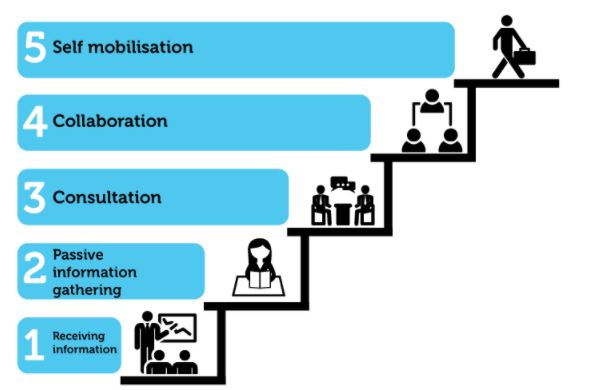In each partnership, 'the community' takes a different form and the degree of their involvement varies. We have categorised the way communities (can) be involved at five different levels, which together form the participation ladder.

Level 1: Receiving information
The organisation informs direct stakeholders about planned projects and activities. Informing can take place through an information meeting or brochure. Participation is passive rather than active, with no voice - and thus ownership - of the stakeholders.
Level 2: Passive information gathering
The local partner organisation discusses options with direct stakeholders and their opinions are sought. Organising focus groups or interviews allows stakeholders to provide feedback and inform the implementing organisation about local conditions. However, power and control lie with the organisation; they make the final decision.
Level 3: Consultation
The implementing organisation encourages direct stakeholders to come up with their own ideas and help decide on the way forward. They are consulted. Through committees or participatory activities, analysis, planning and decisions are made together. Stakeholders have the opportunity to become co-owners of the process.
Level 4: Collaboration
Here, the implementing organisation is a partner or facilitator of the community. Direct stakeholders are involved at all stages of the process: not only do the various stakeholders decide together what the best solution is, but they also form a partnership to implement it.There is an equal distribution of power.
Level 5: Self mobilisation
Now, ownership lies entirely with the direct stakeholders. Support takes place within frameworks of grants, advice and support. Power and control rests entirely with the central stakeholders.